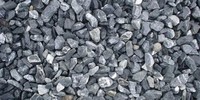Facts about Gravel

Where natural gravel deposits are insufficient for human purposes, gravel is often produced by quarrying and crushing hard-wearing rocks, such as sandstone, limestone, or basalt.

Large gravel deposits are a common geological feature, being formed as a result of the weathering and erosion of rocks.

Many roadways are surfaced with gravel, especially in rural areas where there is little traffic.

Southern England possesses particularly large concentrations of them due to the widespread deposition of gravel in the region during the Ice Ages.

One cubic foot (28.32 dm3) of gravel typically weighs about 100 pounds (45 kg).

Gravel is also used for aesthetic purposes, to enhance the appearance of gardens.

The natural erosion of larger rocks has led to the formation of many gravel deposits.

Globally, far more roads are surfaced with gravel than with concrete or tarmac.





